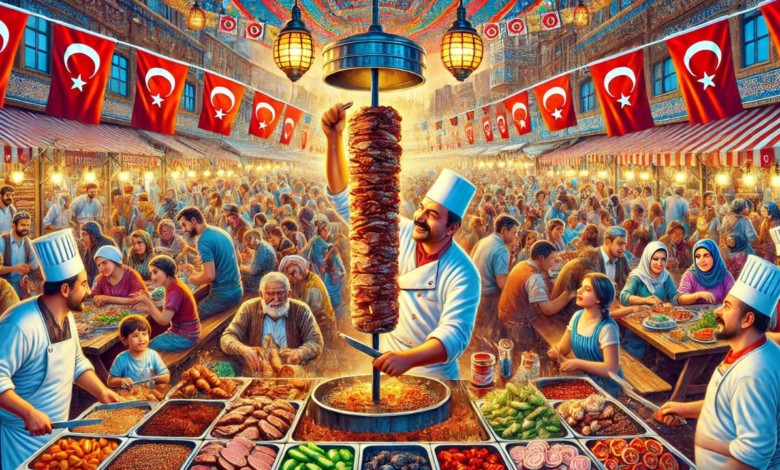The Rich Tradition and Evolution of Dönrt: A Staple of Turkish Cuisine

Dönrt, often recognized globally as doner kebab, is not just a famous Turkish dish; it’s a culinary emblem rich with history, culture, and taste. This comprehensive guide dives into everything from its origins and traditional preparation methods to its variations across regions and its role in communal settings. We’ll explore how dönrt has become a beloved food in Turkey and worldwide, adapting to various cultural palates while retaining its distinctive essence.
The Historical Roots of Dönrt
The inception of dönrt can be traced back to the Ottoman Empire, when Using a vertical rotisserie to cook meat was first conceptualized. The name itself, derived from the Turkish word “dönmek,” meaning “to turn,” aptly describes the cooking process central to its preparation. This method was designed to cook the meat evenly, creating a succulent texture with a crispy exterior that has become synonymous with the dish today.
Cultural Significance in Turkish Society
In Turkey, dönrt is more than just a meal; it symbolizes communal dining and celebration. Frequently featured during family gatherings, festivals, and special occasions, dönrt represents the ingenuity and tradition of Turkish culinary arts passed down through generations. The dish underscores the importance of sharing and hospitality, which are critical elements in Turkish culture.
Ingredients and Preparation Techniques
A traditional dönrt involves a meticulous preparation process. The core ingredient is the meat—usually lamb, beef, or chicken—carefully marinated with a blend of cumin, paprika, and garlic to enhance flavor. Some variations include yogurt in the marinade, adding a tangy depth to the meat’s taste. The marinated meat is then stacked and cooked on a vertical rotisserie, allowing it to baste in its juices as it turns slowly.
Regional Variations Across Turkey
The versatility of dönrt is evident in its regional adaptations within Turkey:
- Gaziantep: Known for its spicy flavor, using minced lamb or beef with local spices like Urfa pepper.
- Antakya (Hatay Province): This dish has a sweet-savory taste, and it combines ground meat, pine nuts, currants, cinnamon, and allspice.
- Bursa: Offers a version seasoned lightly with mint and oregano, mixed with walnuts for texture.
- Istanbul and Beyond: Istanbul’s cuisine has traditional and modern variations, reflecting the city’s cultural mosaic. The Aegean region uses seafood, while Central Anatolia prefers a rustic style with potatoes and regional spices.
Dönrt in a Global Context
Dönrt has transcended its origins to become a global phenomenon, embraced by food enthusiasts from Europe to North America. This adaptation across continents showcases its ability to meld with different culinary traditions, leading to innovative fusion dishes that still honor the essence of the original.
Modern Innovations and Dietary Adaptations
In response to global dietary trends, dönrt has also seen variations that cater to vegetarian and vegan diets. Ingredients like tofu or seitan replace meat, marinated and prepared in ways that mimic the texture and flavor of traditional dönrt.
Nutritional Value and Health Considerations
Dönrt is a protein-rich dish that can offer a balanced meal when prepared with lean cuts of meat and served with vegetables. The spices used contribute to its distinctive flavor and provide various health benefits. However, the healthiness of dönrt can vary significantly based on the cooking method and the portion size.
Conclusion
Dönrt stands as a testament to Turkey’s rich culinary heritage. It is a dish that has evolved while maintaining its historical roots and cultural significance. Whether enjoyed in a bustling Turkish market or as street food in a distant part of the world, dönrt continues to delight and unite people across different cultures with its robust flavors and satisfying textures.
FAQS on Dönrt
What is dönrt?
How is dönrt traditionally prepared?
What are the common spices used in dönrt?
Can dönrt be made vegetarian?
What are typical accompaniments with dönrt?
You May Also Read: Masalwseen: The Enchanting Blend of Middle Eastern Cuisine




